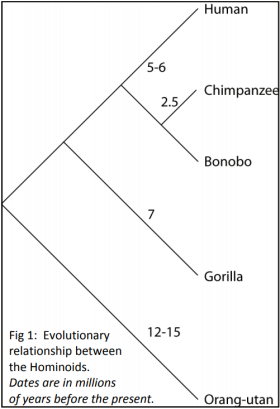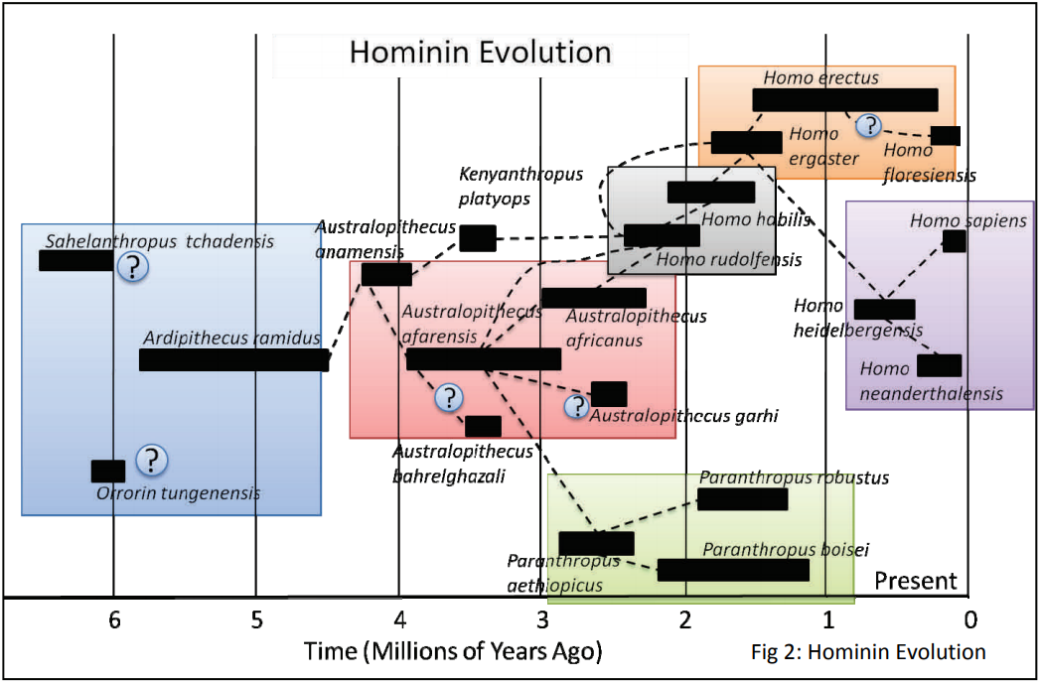Human evolution is the process by which over time, humans have changed to optimise the fit between the individual members of a population and their environment. In contrast to the modern human desire to live a long life, evolution is directed primarily by the biological drive to reproduce and pass genes on to successive generations. Only lineages that can successfully reproduce will survive.
The process of evolution is driven by the interaction of humans with their environment. The sum of the interactions between the individual and all biotic and abiotic components of their environment will determine the success of the individual in passing on genes and therefore contributing to the survival of the population and features of future generations. These interactions are vast and complex. They present significant variables, including the complexity of intra and inter‐specific interactions playing out in response to biotic and abiotic factors which, when combined with the variation present within the individuals within the population, determine survival.
In biological terms, humans sit with the great apes within the hominoid group but are distinguished within this group by specific physical and behavioural traits including bipedalism, brain size, hairlessness, tool making, language development, abstract thought, social organisation and culture. Current molecular evidence suggests that the pathway to modern humans can be traced back along the hominoid lineage with the first split being the Orang‐utan lineage around 15 million years ago, with the last branch that leads to Homo sapiens splitting from apes 5‐6 million years ago (Fig 1). These dates are based on evidence from the molecular clock which assumes a consistent rate of mutational change over time.
The evolution of Hominins (humans and their direct ancestors) has been noted for the development of large brains (leading to intelligence) and relatively long lives. Bipedalism is one of several factors selected for that have resulted collectively in the development of intelligence and the success of the hominins. However, the adaptive advantages that these selected features bring are accompanied by adaptive costs. Collectively, adaptive advantage must outweigh adaptive cost for the evolutionary success of the species. However, evolutionary fitness (and the adaptations selected) does not necessarily match health and longevity.






